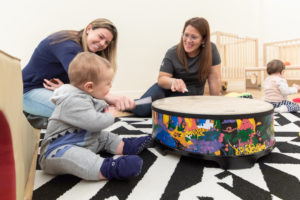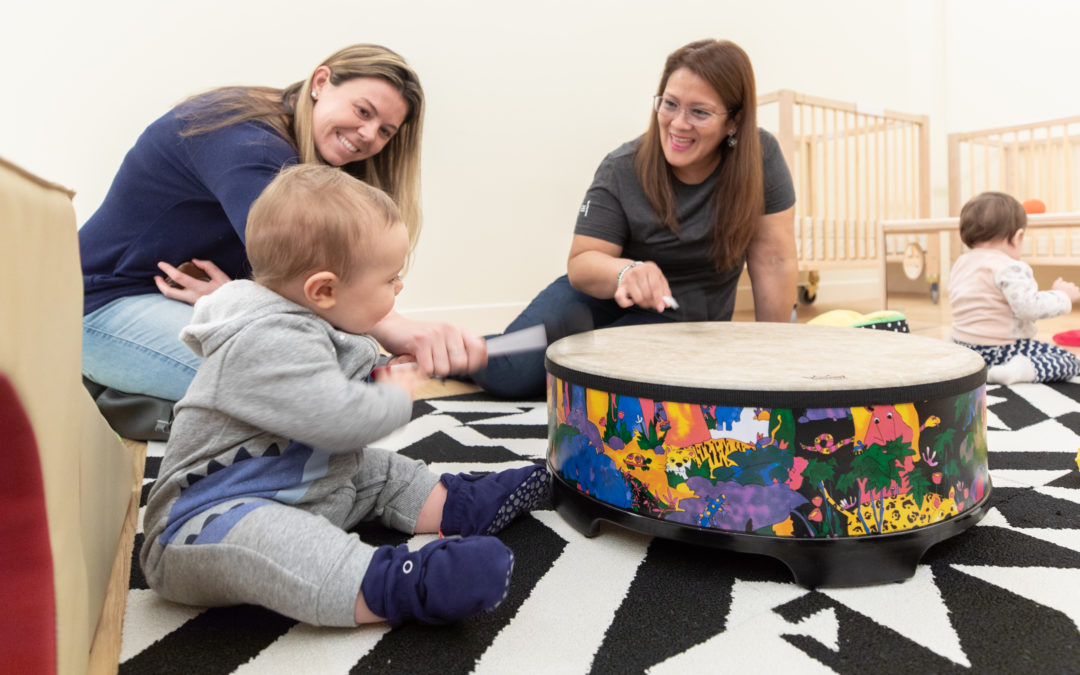June 7, 2020
Language & Learning
For over ten years, developmental cognitive neuroscientists and linguists have been curious about bilingual and multilingual environments. In her 2010 TED Talk entitled The Linguistic Genius of Babies, Dr. Patricia Kuhl shares her experience studying the language acquisition patterns of babies from all over the world. Describing them as “citizens of the world,” she shares that babies “can discriminate between all sounds of all languages” even if it is not their native language in their country of origin. Seven years later, Naja Ferjan Ramirez and Dr. Kuhl published a study from the Institute for Learning and Brain Sciences at Washington University: Bilingual Baby: Foreign Language Intervention in Madrid’s Infant Education Centers. Overall, her powerful and comprehensive work points to the importance of early language adoption — that our early childhood brains are significantly more prepared to learn multiple languages than our teenage or adult brains.
Some see the intrinsic value of learning multiple languages, recognizing that the brains of infants and toddlers are more equipped to learn multiple languages. But why does it matter? What do we gain from bi- or even multilingualism? These questions have fueled research from labs across the globe.
Dr. Viorica Marian and Anthony Shook published a study in Cerebrum of the Dana Foundation. Their 2012 article (aptly entitled) The Cognitive Benefits of Being Bilingual, addresses the difference between monolingual and bilingual brains. They found that bilingual brains show higher levels of attention and flexibility (task-switching and adaptability). When considering cognitive functions like flexibility and attention, it feels natural to visualize a Montessori or Reggio-Emilia Classroom — learning environments modeled from collaborative hands-on learning and self-guided learning activities.
In all of this research relating language-learning to higher cognitive functions, perhaps it is most exciting to note the work of Jean-Marc Dewaele. His work illuminates the fortified connection between language and emotion, finding that multilingualism actually heightens empathy and perspective-taking in young children. Dewaele produced research and articles such as Multilingualism, empathy and multicompetence (2012). Even further, a 2015 study by Samantha Fan and Zoe Liberman at the University of Chicago, published in Psychological Science, finds that those simply exposed to another language on a regular basis have increased empathy. The “exposure advantage,” notes that children who were exposed to multiple languages performed as well as on empathy-based tasks as the children who were fully bilingual.
All of this to say, exposure and immersion in multiple languages from infancy and into your early childhood years increases empathy and perspective-taking and can even strengthen abilities to sustain focus and flexibly move from one task to another. No, this was not what Loris Malaguzzi meant when he praised the 100 languages of children, but in a way isn’t this what we are all hoping for? Isn’t our primary goal to support children in becoming citizens of the world? To become people who can imagine through the eyes of another and sing to them in their language?
Resources
- NAYCE: 10 Ways Your Baby Learns When We Sing to Them
- Speech Buddy: Children Songs in Different Languages
- Fluent in 3 months: Sing your baby bilingual
- Little Global Citizens
- Childventures

SolBe Infants, Toddlers, and Preschoolers experience a variety of cultures through language, song, and play. Here, Educator Ruth introduces the sounds of a hand drum.


